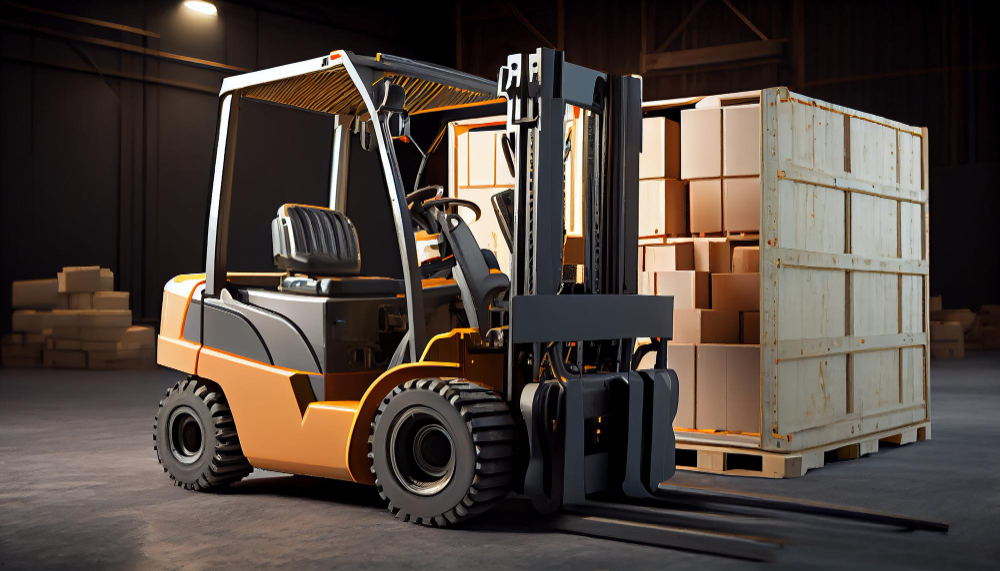The capacity of a forklifts is defined as the amount of weight the machine can lift safely at a given time. As we know, forklifts are used at construction sites, warehouses, manufacturing sites, etc. for lifting and moving materials from one place to another. However, not all forklifts can lift the same amount of weight. Most of the smaller electric models have a very small lift capacity (up to 12,000 lbs.) whereas larger diesel-powered variants can have a lift capacity of as much as 158,000 lbs. depending upon the model. Most forklift manufacturing companies add data plates on forklifts that indicate their load capacity. However, this figure can be inaccurate at times. This is because forklift capacity can be defined using two terms. These are:
Rated capacity: This alludes to the maximum weight that is often listed on the data plates of any given forklift. The problem with rated capacity is that it usually describes a recommended weight range instead of a definitive limit.
Net capacity: Also known as the payload capacity. This is the actual load a forklift can carry at a given time.
Before we describe the formula for calculating load capacity, there are certain factors that we need to discuss. These include:
Load center: The horizontal distance from the front of the forks to the center of gravity of the load. Generally 2 feet from the face of the forks. Not centering loads at this point lowers overall carrying capacity.
Attachments: Help a forklift carry a large variety of materials. Attachment weight must be subtracted from the rated capacity. Can also shift a machine’s center of gravity.
Dimensions: Weight and size of the forklift. Larger machines have larger capacity than smaller ones. Larger machines are also more vulnerable to accidents when carrying too much weight.
Lift height: Capacity is also affected by the height at which the load is lifted. A higher lift height equals less load capacity and more instability.
Learn More : How much electricity does a forklift use?
The Formula for Load Capacity:
The formula for the calculation of the load capacity of a forklift is as follows:
Net capacity = X – Y/Z
Here X = A (B+C), where
A = Rated capacity
B = Distance from front wheel centerline to fork face
C = Distance from fork face to rated load center
Similarly, Y = D (E+F), where
D = Weight of attachment
E = Distance from front wheel centerline to carriage face
F = Distance from carriage face to attachment’s center of gravity
And finally Z = E+G+H, where
E = Distance from front wheel centerline to carriage face
G = Distance from carriage face to rear face of load
H = Distance from the rear face of the load to the center of the load
By knowing the value of all of these attributes, you can calculate the net load capacity of a forklift. If this sounds like too much of a hassle, then fear not as all of the forklifts come equipped with data plates that describe their load capacity (as mentioned above).
Learn More : What is the difference between a Lift truck and a forklift?
Dangers associated with exceeding lift capacity:
Any employee working with a forklift should always read the data plate so they can get an idea of the load capacity of the machine. Lifting too much weight (or exceeding weight capacity) can often result in accidents leading to damages to the machine and injuries to workers. Some of the common accidents include:
Carrying too much weight can make it hard for the operator to steer the forklift.
Exceeding the load capacity can result in spilled loads.
A forklift carrying too much weight can tip over.



